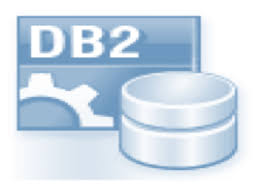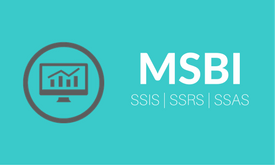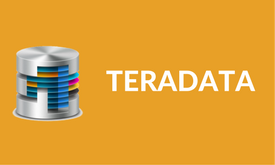Mainframe DB2 DBA Training is a pioneer DB2 DBA training in chennai strongly determined to provide DB2 UDB and Mainframe DB2 DBA Trainings with real time Job Oriented trainings. We have been providing IBM DB2 DBA Training and Mainframe DB2 DBA Training in chennai. DB2 Administration for Linux, Unix and Windows training sessions are completely practical and interactive paired with Realtime Methodologies, Best Practices and Certification Guidance
About Our Trainer
As a Trainer, Mr.Ram work as a BI Consultant for a Leading MNC in Chennai with 12+ years experience in both software development and training and very keen in delivering the BEST Cognos Business Intelligence Trainings. The trainee can simply depend on Ram for his excellent Real Time examples on every part of the concept paired with in-depth discussions and Datawarehouse recommendations. All sessions are completely practical and very much interactive.
Specialties
ETL & Data Warehouse Consulting using Cognos and other ETL tools. 8+ years Cognos experience Including Version 10
Please Note: Trainer is a Realtime Expert and Currently working for one MNC. Hence all the Training Schedules (timings) are fixed. No One - One Trainings can be provided as of now.
Want a free career Advice or any career related queries? Reach him by
+91- 8939915572
Course Curriculum
Curriculum
Course Description
- DB2 Training in Chennai, With our IBM DB2 Universal Database Fundamentals training course you will learn to plan and secure a DB2 UDB
database, access data and manipulate & control database objects and execute queries using SQL. The course also covers
how to choose appropriate isolation levels and to describe how locks are acquired in a DB2 UDB database. This course also
covers the training for the IBM Certified Database Associate & Administration certification exam.
Module: 01
- Overview of DB2 9.5 on Windows
- Contrast the DB2 Family of products
- Identify the DB2 Tools
- Functions of DB2 components
- Explore installation and parameters Command Line Processor (CLP) & GUI Usage
- Use the Command Line Processor
- Explore the GUI environment
- Describe the DAS role with GUI tools
Module: 02
- The DB2 Environment
- Key features of an Instance
- Create and drop an Instance
- Use db2start and db2stop
- Distinguish b/w types of Config.
- Describe and modify the
- Database Manager Configuration
- Creating Databases and Data Placement
- Creating a Database.
- Explore system Catalog tables, views
- Compare DMS Vs SMS table Spaces.
- Database with Automatic Storage.
- Differentiate between table spaces, containers, extents, and pages
- Define table spaces
- Get snapshot for table spaces
- Explore Database Config. Parameter.
Module: 03
- Creating Database Objects
- List DB2 object hierarchy and physical directories & files
- Creating objects: Schema, Table, View, Alias, and Index
- Explore the use of table partitioning
- Review the use of Temporary Tables
- Implementation of Check Constraints, Referential Integrity and Triggers
- Exploring the use of Large Objects CURRICULUM
Module: 04
- Moving Data
- Discuss the INSERT statement and Recognize its limitations
- Explain the differences between IMPORT and LOAD
- Explain the EXPORT, IMPORT, and LOAD syntax
- Create and use Exception Tables and Dump-Files
- Distinguish and Resolve Table States: Load Pending and Set Integrity Pending
- Use the SET INTEGRITY command
- Discuss the db2move and db2look commands
Module: 05
- Backup And Recovery
- Describe the major principles and methods for backup and recovery
- State the three types of recovery used by DB2
- Explain the importance of logging for backup & recovery
- Describe how data logging takes
- Place –circular & archival logging
- Use the BACKUP, RESTORE, and
- ROLLFORWARD commands
- Perform a table space backup and recovery
- Restore a database to the end of logs or to a point-in-time
- Backup and recovery scenarios
Module: 06
- Locking And Concurrency
- Explain why locking is needed
- List objects that can be locked
- Describe and discuss the various lock modes and their compatibility
- Explain four different levels of data protection
- Set isolation level and lock time out for current activity
- Explain lock conversion & escalation
- Describe causes of Deadlocks
Module: 07
- Problem Determination
- Collect information for problem analysis and resolution
- Use error logs for basic problem analysis
- Describe four types of monitors:
- Snapshot Monitor, Event Monitor,
- Activity Monitor and Health Monitor
- Basic commands to better work with connections and Sessions
- Retrieve statistics and information from a running DB2 instance
Module: 08
- Application Issues and Performance
- Prepare applications that access DB2 data for execution
- Describe the application alternatives available to access DB2 data
- Define the concept of clustering, and determine the proper cluster sequence
- Use RUNSTATS, REORGCHK, and
- REORG to enhance application performance
- Work with the EXPLAIN facility
Module: 09
- Security
- Use Access Control Mechanisms to implement database security
- Use group IDs to create a control hierarchy
- Describe Label Based Access Control
- Describe privileges within a database
- Describe privileges required for binding and executing a package
- Describe the difference between explicit privileges & implicit privileges
- Describe the different level of authorization
IBM DB2 Certifications
DB2 Training In Chennai, Bangalore, Pune, Hyderabad for Corporate and Working Professionals
DB2
DB2 Training in Chennai
DB2 Training in Chennai which helps you to understand how the companies are using DB2. In the Year of 1983 IBM introduced relational Database model in Mainframe. If we want to work or interact with database means we need to know about DB2 subsystem. Our DB2 Training in Chennai is very much mixed both practical and interview point of questions.
DB2 Course Syllabus
Introduction to DB2
- What is database and its basic types
- Database models
- Hierarchical
- Network
- RDBMS
- Object Oriented
- Discuss about storage group and volumes table spaces
- Index spaces
- Basic Information About
- Table
- Row
- Column
- Queries
- View
- Trigger
- Synonyms
- Alias
- Discuss Physical Storage of DB2
- DB2 objects
- Buffer pools
- Features of Database design and its types
- Discuss the advantages of DB2 over VSAM
- Discuss the features of data integrity and referential integrity
Interaction with DB2
- Interaction with DB2 using TSO with SPUFI tool and QMF tool
- Introduction to SQL for interacting with DB2
- Introduction to COBOL-DB2 application program
- Using run JCL we can pass the queries
- With execute immediate
- Using prepare and execute technique
- Using dynamic SQL for running the queries
- Discussing the compilation of COBOL-DB2 program
- Facility of Error handling in DB2
- Using DSNTIAR procedure approach
- Using SQL codes
- Discussing commit and rollback features
- Introduction to CURSOR concept
- Handling Null values in DB2
- HANDLING VARCHARS
- Locks facility
- Error Handling
- Error Handling – Introduction
- SQLCA
- DSNTIAR
- WHENEVER
- COMMIT
- Rollback
DB2 Utilities
- Data Consistency Utilities
- CHECK Utility
- REPAIR Utility
- REPORT Utility
- DIAGNOSE Utility
- Backup and Recovery Utilities
- COPY Utility
- MERGECOPY Utility
- QUIESCE Utility
- RECOVER Utility
- REBUILD Utility
- REPORT RECOVERY
- Data Organization Utilities
- LOAD Utility
- REORG Utility
- Catalog Manipulation Utilities
- CATMAINT Utility
- MODIFY Utility
- RUNSTATS Utility
- STOSPACE Utility
Miscellaneous
- DB2 Commands
- Dynamic SQL – Introduction
- Dynamic SQL – Types
- When to use Dynamic SQL
- Execute Immediate SQL
- Non-select dynamic SQL
- Parameter marker
- Fixed-list select
- Varying-list select SQL
Stored Procedure
- Stored Procedure – Development
- Creating Stored Procedures
- Managing Stored Procedures
- Executing a Stored Procedures






